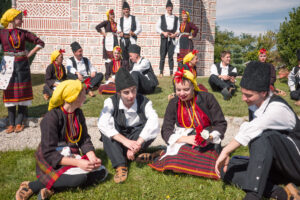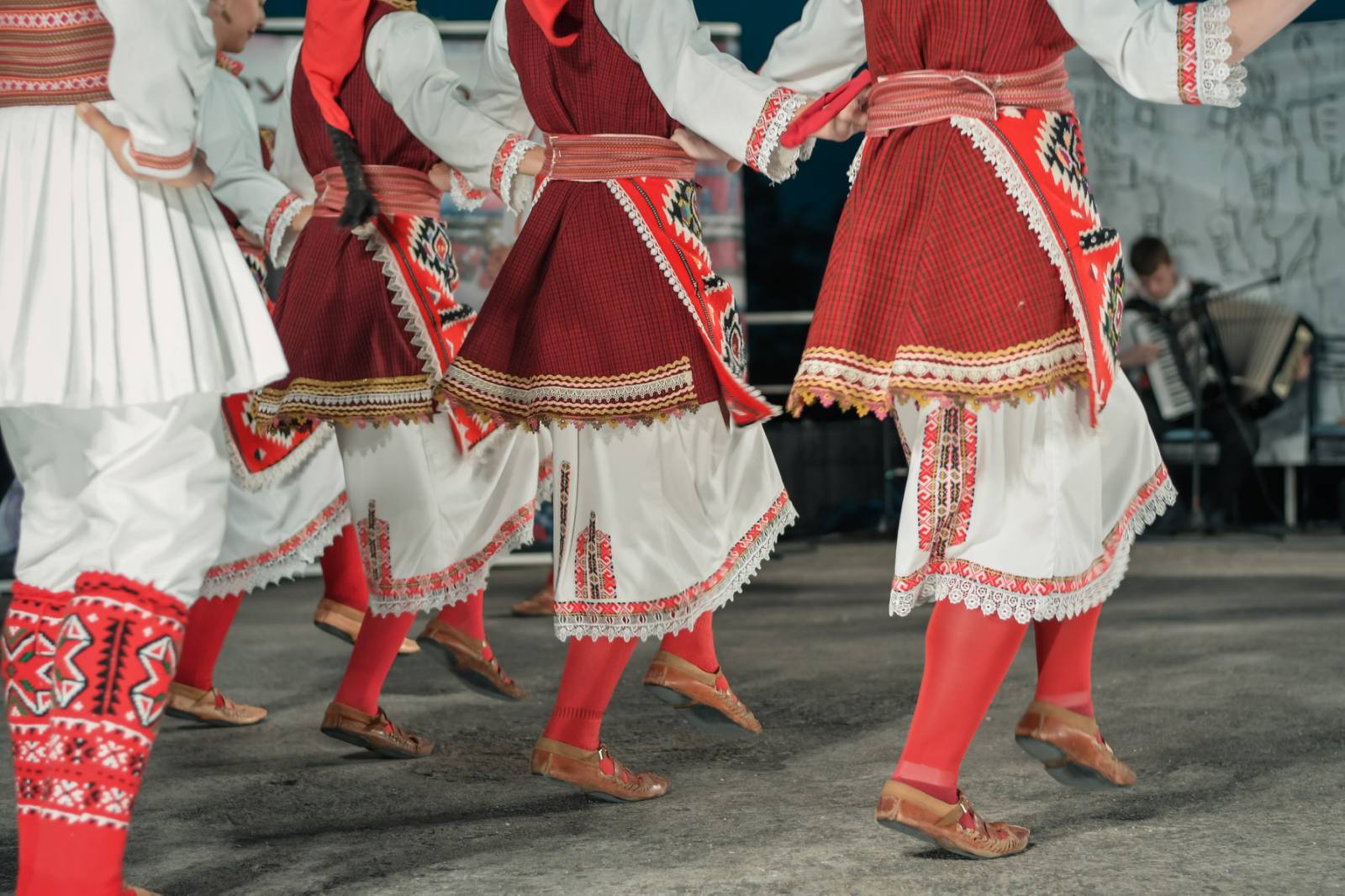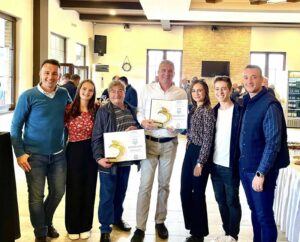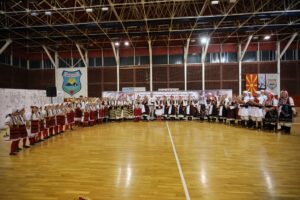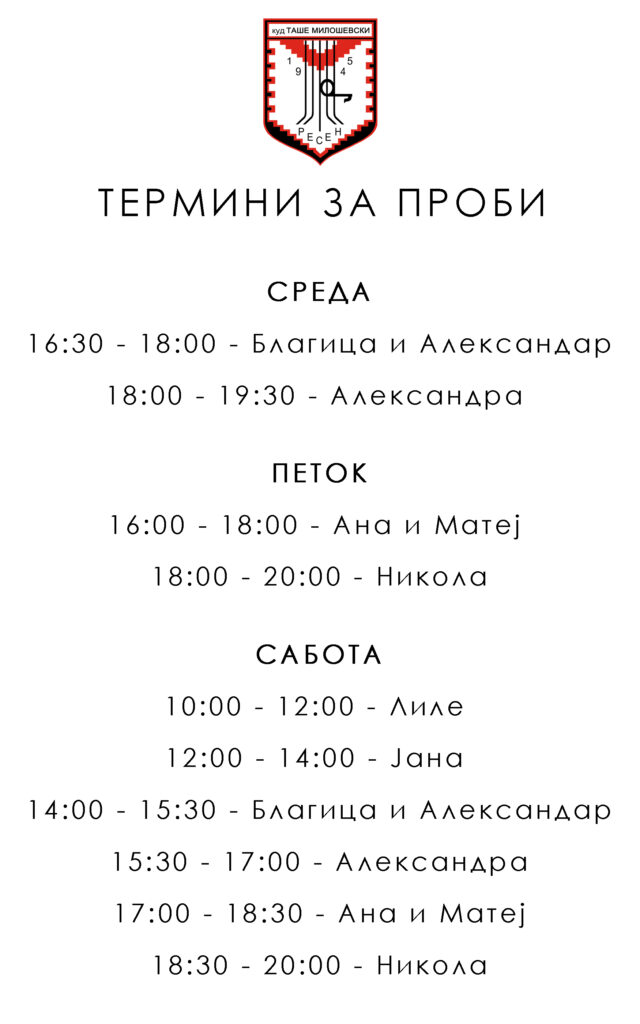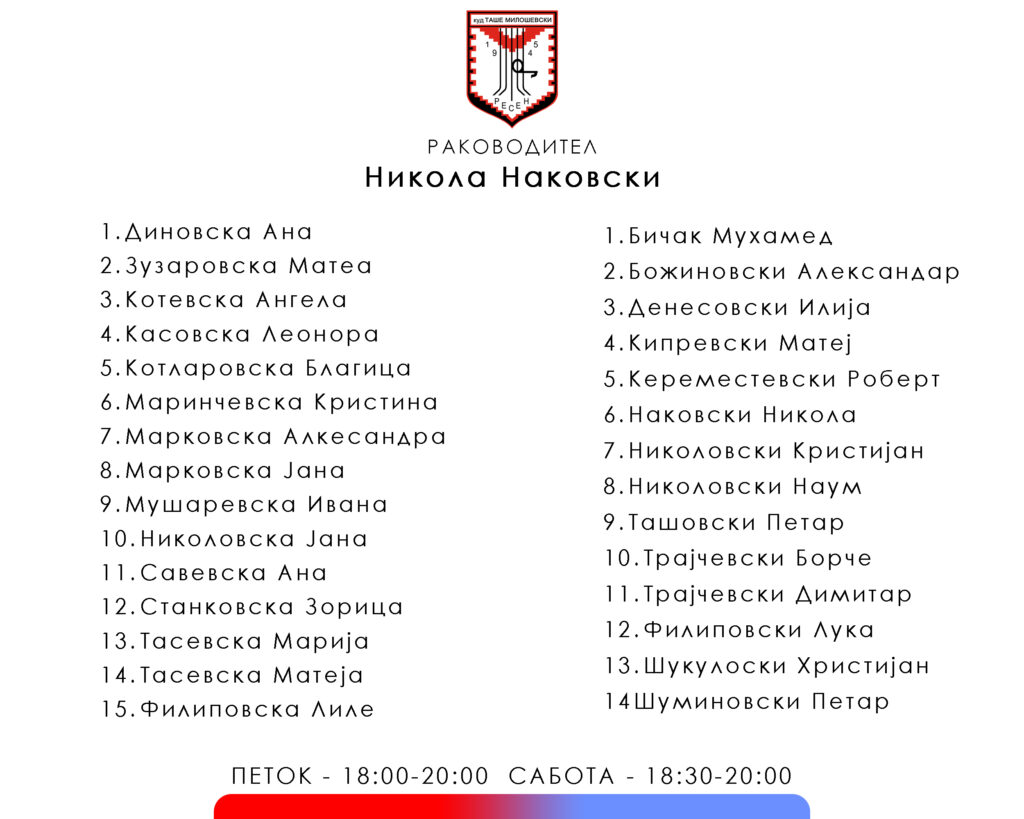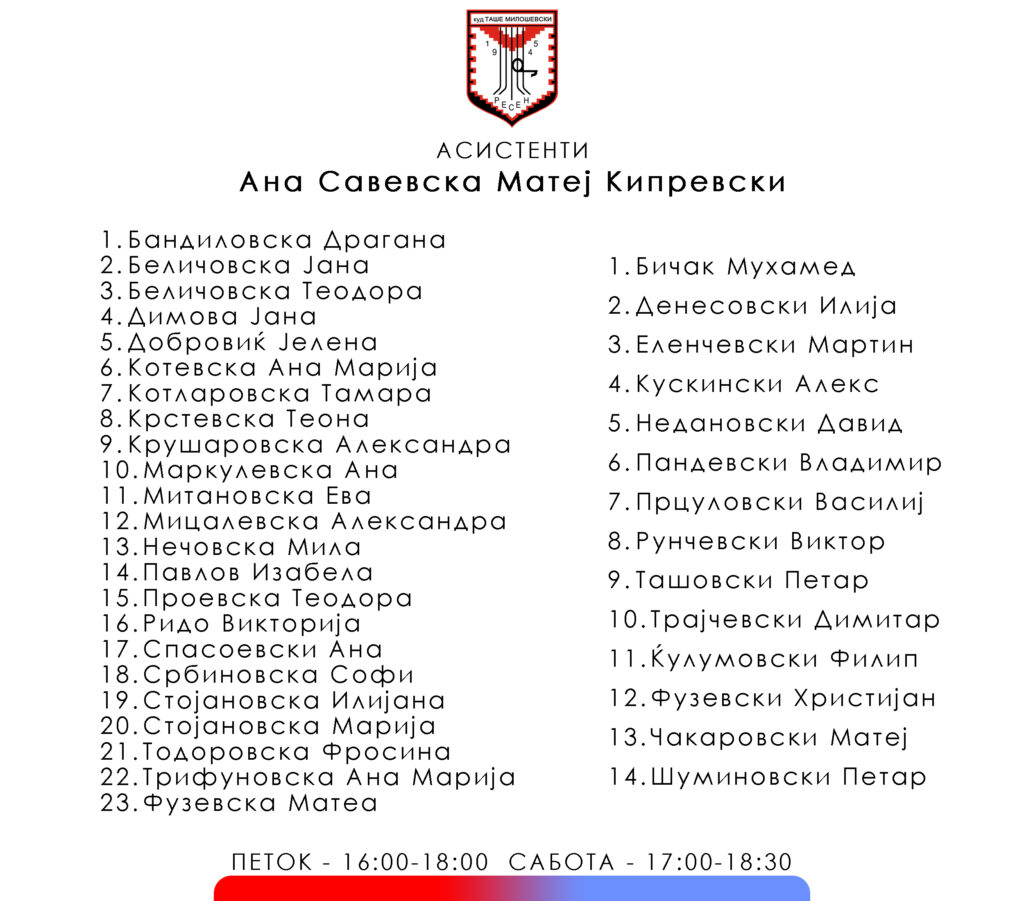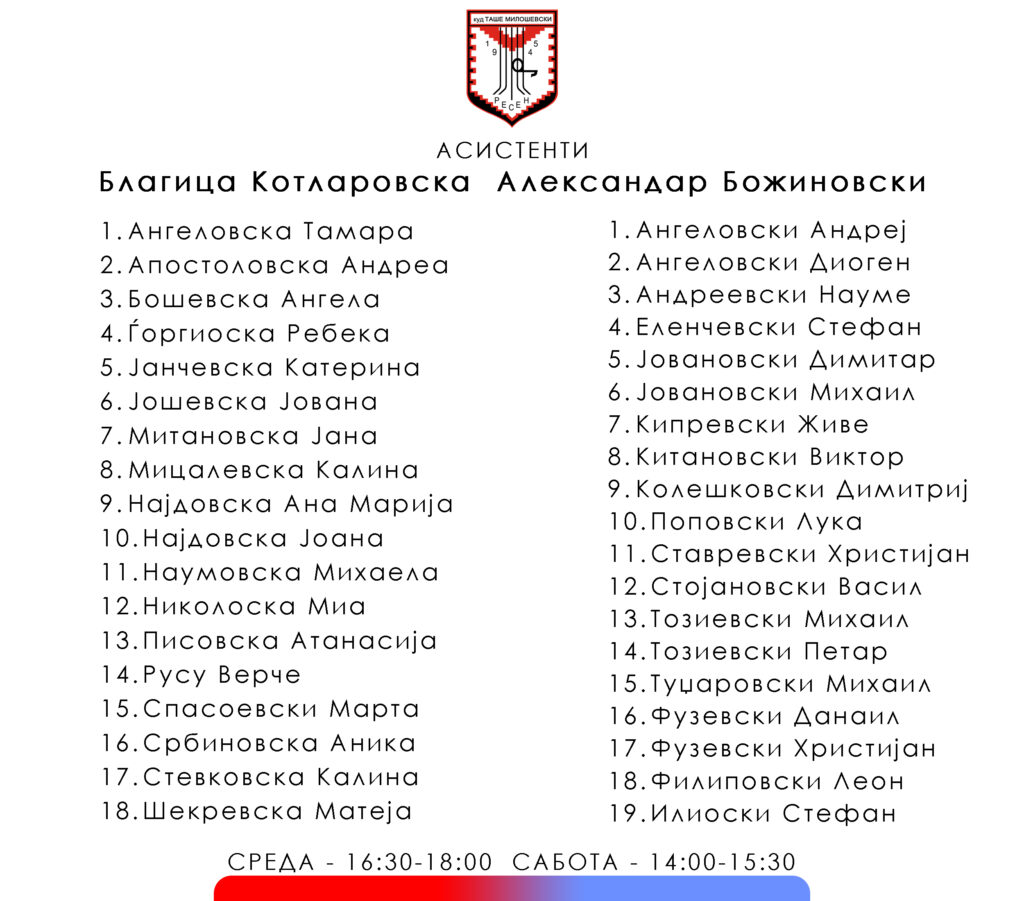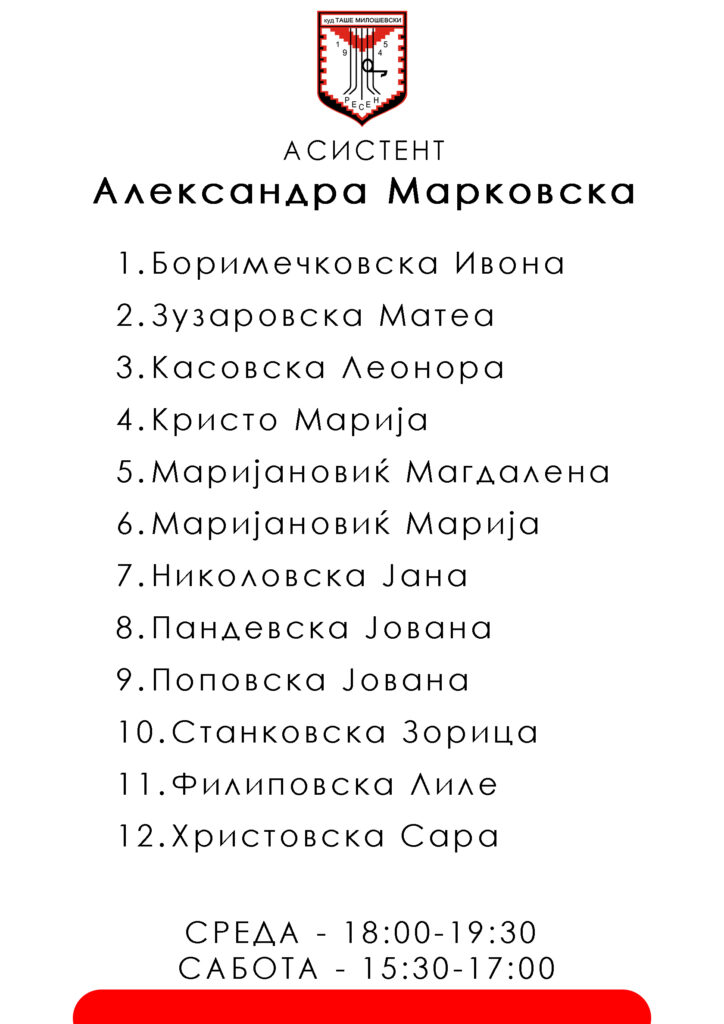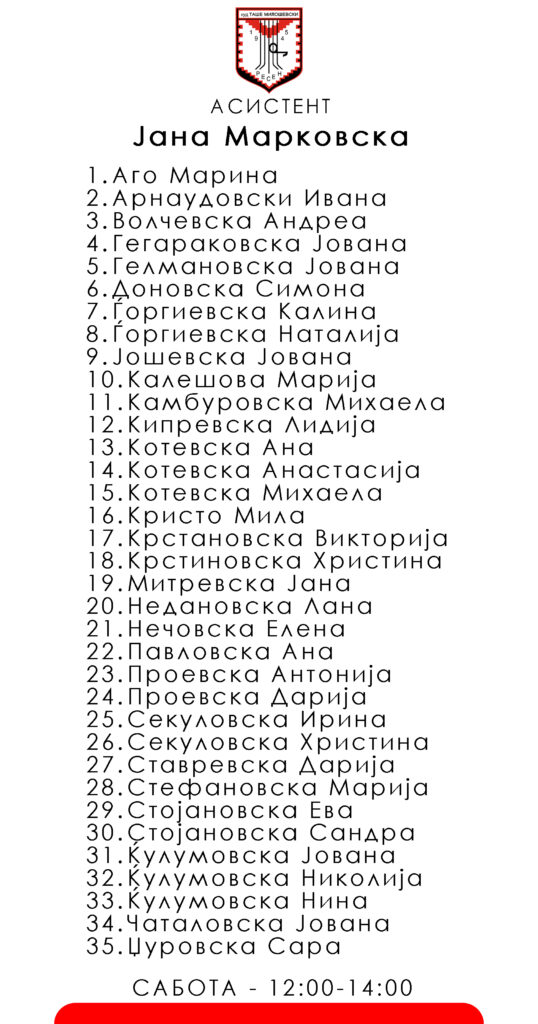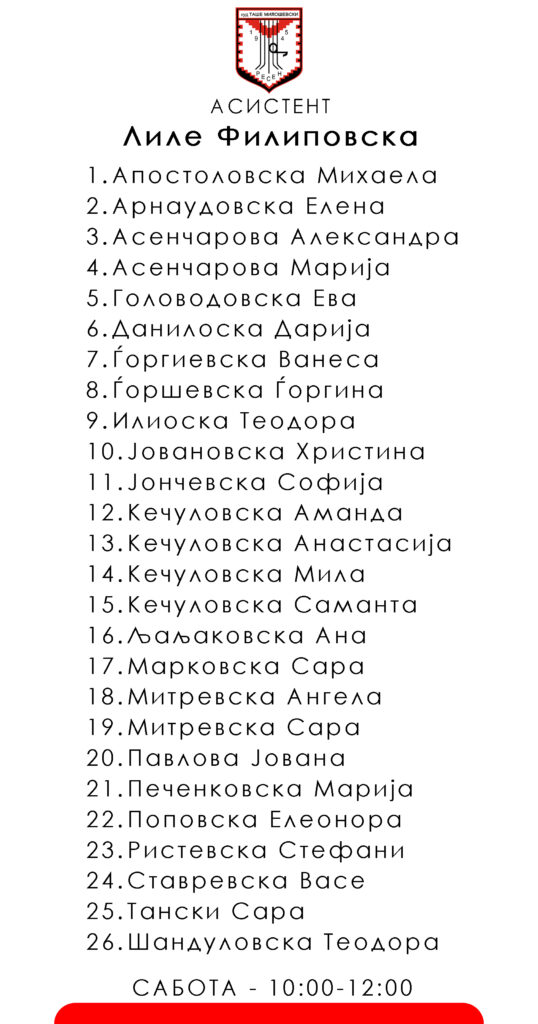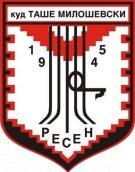Almost every region in Macedonia has its own characteristics in terms of costumes and folk dances. Their abundance allowed the top experts to create the following choreographies, which are only a part of the repertoire we perform:
Osogovka
Location of origin – Kochani region, Dancers’ composition – men
Character of the dance: Typical masculine temperamental dance with pronounced balances, bounces, landings, and sharp movements with both legs. It is danced with great extravagance and boldness and at certain moments with loud shouts from the players.
Tresnica
Location of origin - Mariovo, Dancers’ composition - women
Character of the dance: Typical female dance with measured and dignified movements and pronounced balancing of the body. It also contains dynamic dramatic elements, such as the shaking of towels and reflection in a mirror, which show the preparation of the maiden to highlight her grace and beauty.
Staro Tikveshko
Location of origin – Tikvesh region, Dancers’ composition – men
Character of the dance: A typically male dance consisting of five parts in which there is a gradation in tempo from slow to fast. The first and second parts are slower and danced simply with pronounced balances and dancing on the knees, and the other three parts are much faster with jumps and landings, turns of the body, kneeling on both legs and lying down on the legs and arms.
Vodarki
Location of origin - Macedonia, Dancers’ composition - women
Character of the dance: A typically female choreography showing the old tradition of maidens filling water jugs from village fountains. The choreography abounds with mimetic-dramatic elements and vocal performance. The beginning demonstrates the way the pitchers are being carried and it is at a slower pace. In the continuation, the theme accelerates sharply and with gentle landings in intertwined formations of three groups of female dancers, skill and beauty is manifested.
Kalajdzisko
Location of origin – Veles region, Dancers’ composition – men and women
Character of the dance: A moderately fast dance that speeds up towards the end. It is characterized by calm movements and balanced steps, then landings and under-jumps with low stoops. It abounds with mimetic-dramatic elements characteristic of the tinner's craft – tinning the dishes, wiping, and shining the pans, wiping the sweat of the tinners. Finally, the performance of the old craft is choreographed with a solo performance and song by the tinsmith and songs and dances by the other dancers as his assistants in the craft.
Biljana
Location of origin - Ohrid, Dancers’ composition - women
Character of the dance: Very attractive choreography that finishes from moderately fast to a fast one, giving the impression of the women's steps as if they were embroidered for each other. The choreography shows the traditional way of bleaching the canvas on the shores of Lake Ohrid, and through the performance itself, figures are made with the canvases, which give the choreography a special attractiveness and visual fulfillment.
Prespa dance
Location of origin – Prespa, Dancers’ composition – men and women
Character of the dance: Choreography in which a variety of rhythms and speed of the tempo can be observed. The only one in which the women gracefully raise their legs more than usual in Macedonian folklore. The dance is a kind of competition between women and men within the framework of a love story that is conveyed through the dance. It finishes with fusion and compactness with a very rich and attractive finish with specific steps.
Zhetvarki
Location of origin – Kochani region, Dancers’ composition – men and women
Character of the dance: A musical-stage performance about the centuries-old traditions of harvest activities. The temperamental dances give a cheerful connotation to the very difficult activity presented. Looking at the choreography, it becomes clear to everyone what it is about, and this speaks of the originality in the selection and presentation of all elements within the whole, which is beautiful.
Kopachija
Location of origin – Kichevo region, Dancers’ composition - men and women
Character of the dance: This choreography synthesizes Svekrvino, Chetvorka, Malesora and Krstachko oro (dance). In all of them, at different tempos, many choreological elements are performed with grace in movements, dignity, and pride. The Macedonian strong woman stands out, dignified, wise, hardworking, and at the same time the Macedonian as strong, unruly, proud, warlike, hardworking, but also very gifted in dance and song. All this fascinates and leaves observers breathless and represents a dance competition.
Komitsko
Location of origin - Krushevo, Dancers’ composition - men and women
Character of the dance: Komitsko as a choreographic unit represents a kind of musical drama. The fight of the Macedonian people against the Ottomans is presented with many mimetic-dramatic elements, and in a very melancholic way, so that the observers gain knowledge about the preparation, the conduct of the battle and the death of the heroes in the bloody battle. At the beginning, the slow pace gradually accelerates during the performance of the battle, so that at the very finish, in complete darkness, the Macedonian woman appears, with a candle in her hands, expressing her grief for the lost lives of her loved ones. In those moments, the musical background shakes the feelings and shivers the body.
Egejsko
Location of origin - Aegean Macedonia, Dancers’ composition - men and women
Character of the dance: The choreography is interspersed with flirting and coquettishness between men and women. It begins in a slow rhythm with a female dance and gentle steps, continues with a male dance that abounds in the elegance of the performance of steps played with specific weight balancing and heel strikes, to finish in a rhythm that is quite fast, in pairs, and elements are performed that are very attractive and synchronized with the speed and cheerfulness of the music.
Istochna
Location of origin - Shtip, Dancers’ composition - men and women
Character of the dance: Very dynamic choreography, in a fast rhythm and extremely fast steps. It is a combination of several original dances such as the Krstachko oro, the Edinaesetka and the Petorka with which it finishes. The wafting of the song gives it a special mark in the moments of outplaying and seducing men and women, and the shouts in the dance itself are numerous and express the pride, self-respect, and steadfastness of the Macedonian people.
Resen dance
Location of origin – Resen, Dancers’ composition – men and women
Character of the dance: Synthesis of original dances specific to the Prespa region. Elements and steps that were found in past celebrations for feasts and weddings. Cohesion of fast female and slow male tempo, in several different rhythms of the dance. As individuals, within the whole, which they perform as a product of cooperation between KUD Taše Miloševski and our colleagues from Greece and Albania within the project "Together for a better Prespa". The costume is a true rarity and complements the expression of pride, courage and inviolability.
